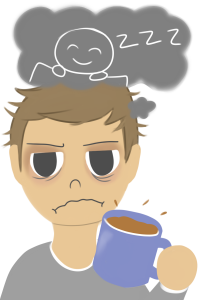CDC Research Recommends Later High School Start Times
SHELLEY LIN
Staff Writer
According to the Centers for Disease Control and Prevention (CDC), 75 percent of public schools in more than 40 states begin class earlier than 8:30 a.m. Because of these early start times, high school students may encounter days either with a decent amount of sleep or an insufficient amount of sleep. The CDC and the American Academy of Pediatrics (AAP) encourage schools to adjust their first period to be later and stated the significant effects that take place when teenagers lack adequate sleep. Studies show how short-term and long-term effects of sleep deprivation can negatively influence a teenager’s body and physical performance.
According to Healthline Network, the short-term effects due to sleep deprivation include depression, higher rates of automobile accidents, poor grades, and conflicts among friends, peers and adults. Long-term effects include high blood pressure, mood disorders, and chronic diseases and conditions such as obesity, depression, diabetes and cardiovascular diseases. According to Harvard Medical School, risks of deaths from any causes by about 15 percent when an individual sleeps less than five hours a night.
“I have noticed that some students do better a little later in the morning. I have had several students fall asleep during tests early in the morning,” math department chair Paul Stein said.
However, some students believe that the time students go to sleep at is more relevant to health issues than the amount of sleep students get.
“I feel that the workload of school is the main cause of poor health [because] it takes hours for students to finish their schoolwork, and that amount won’t change regardless of what time school starts,” said senior Kesia Eng.
